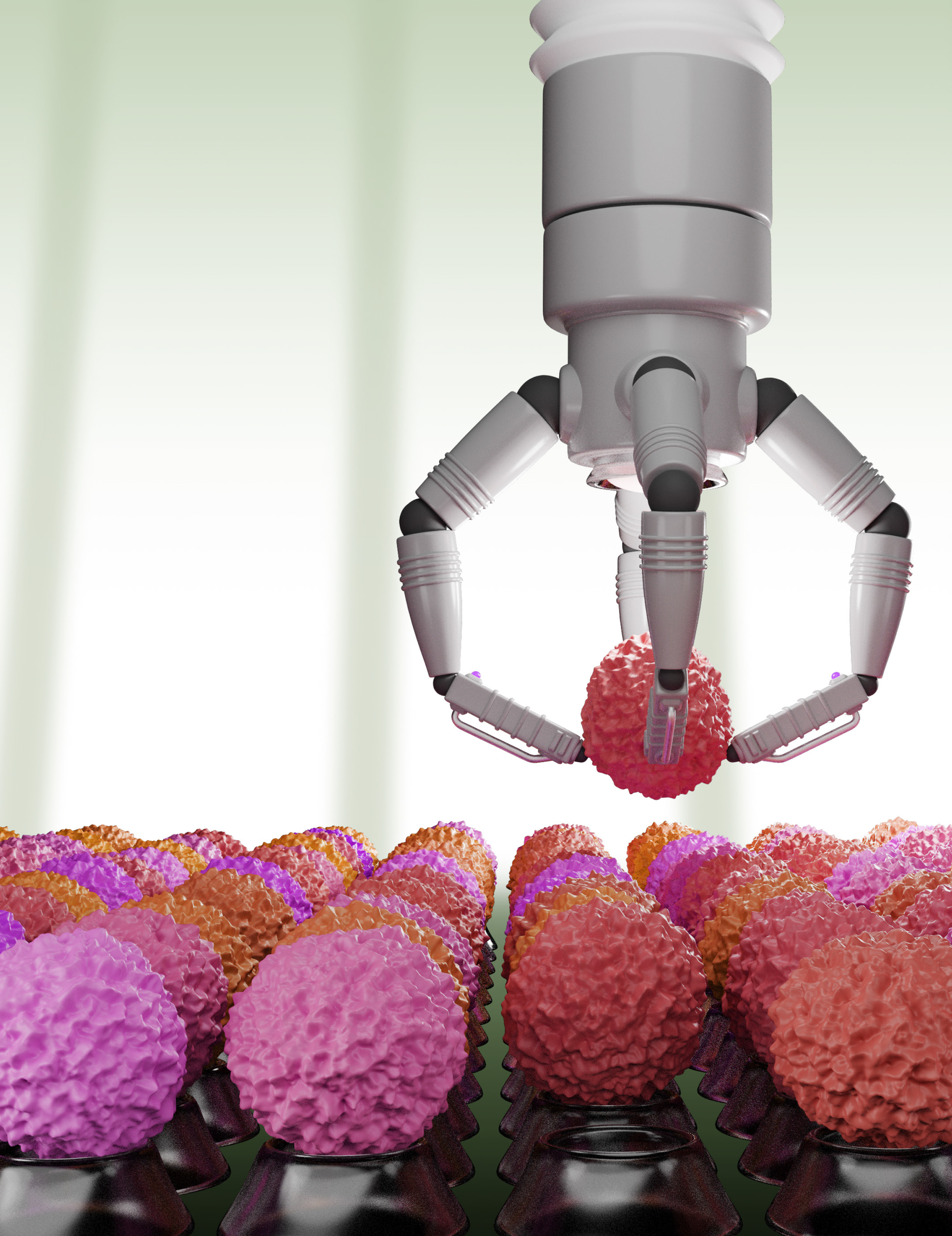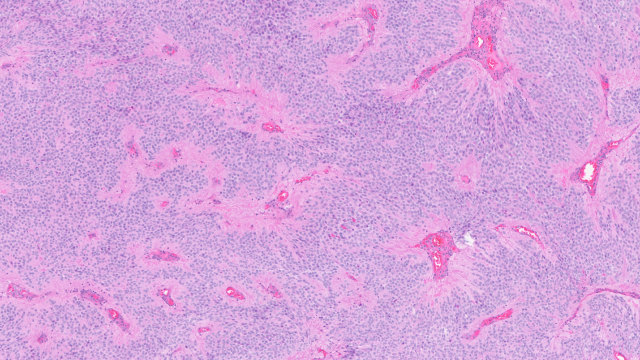Artificial intelligence untangles the cellular signals that matter for anticancer immunity.

This image is a reimagination of the custom robot that CCR researchers developed to investigate how T cells react to seven different stimuli. The robot is capable of conducting thousands of experiments at the same time and gathering an enormous amount of data. Researchers applied artificial intelligence to this data to predict how T cells will behave in response to proteins on tumor cells. These insights could help improve immunotherapy responses in the future. Credit: Joseph Meyer, SPGM, FNL, NCI, NIH; Grégoire Altan-Bonnet, CCR, NCI, NIH; DALL•E AI Art Generator
T cells are the immune system’s anticancer warriors. When they come across a cancerous cell, T cells can go on the attack. But not every tumor triggers a robust immune response, and even when the immune system does recognize a threat, not every T cell engages in the fight.
Senior Investigator Grégoire Altan-Bonnet, Ph.D., and his colleagues have turned to artificial intelligence to make sense of the complex cellular communications that determine the outcome of a T cell’s interaction with a tumor. In a study reported in Science, they developed a model to predict how T cells will respond to specific immune-stimulating molecules called antigens, including those found on the surface of tumor cells. To obtain the necessary data for the model, Altan-Bonnet’s team designed and built a robotic platform that can carry out thousands of experiments at the same time. The model, Altan-Bonnet says, will aid in the development of more effective cancer immunotherapies.
The goal of cancer immunotherapy is to help a patient’s immune system find and destroy cancer cells, but the treatments available today do not always work. Altan-Bonnet says part of the challenge in making immunotherapy effective for more patients is the overwhelming complexity of T cells’ antigen responses.
“T cells do many different things when they get activated, and we don’t know what to look at to predict what matters in terms of cancer immunotherapy,” he says. “We know a lot about the way these T cells are wired, but we can’t take a T cell and predict whether it’s going to be a good T cell, which can go and fight, or whether it’s a T cell that is not going to be very responsive against the tumor.”
To make better predictions about how T cells will respond to tumors, Altan-Bonnet and collaborator Paul François, Ph.D., at McGill University in Montreal, knew they needed a comprehensive catalog of how various antigens impact T-cell signaling.
With the help of their custom-built robot, they used their system to measure seven key immune signals, monitoring how each signaling molecule rose and fell in the hours and days after T cells were exposed to various antigens. After generating an enormous volume of data, they used artificial intelligence to find patterns within it and make predictions about T cell behavior. Their model, which was built using data from mouse T cells, accurately predicts how human T cells respond to tumor antigens. It can also predict the behavior of engineered T cells, such as the CAR (chimeric antigen receptor) T cells used in some cell-based cancer immunotherapies.
The new model doesn’t just predict T cell behavior. It exposes the underlying biology of the system, helping to reveal how T cells make the decisions that shape their behavior. “We’ve learned the rules of the way T cells see the world,” says Altan-Bonnet.



